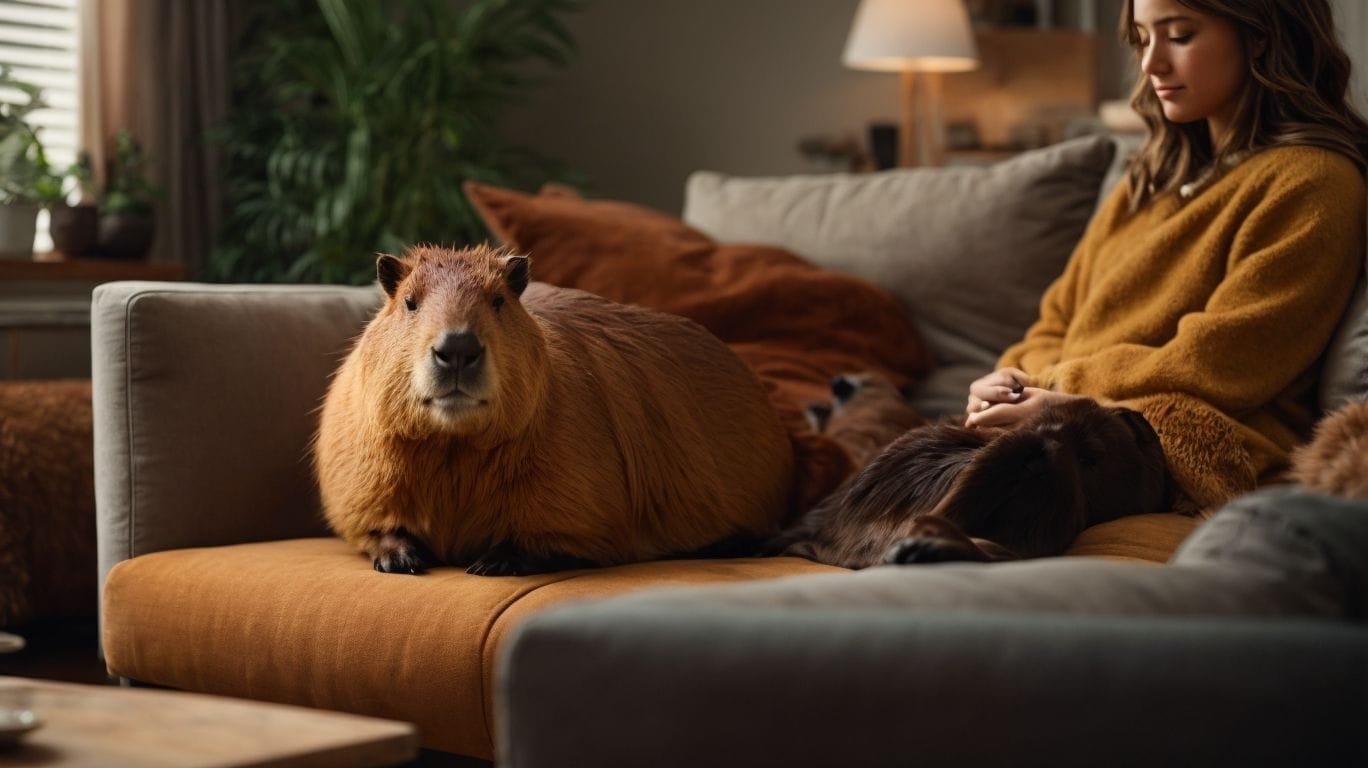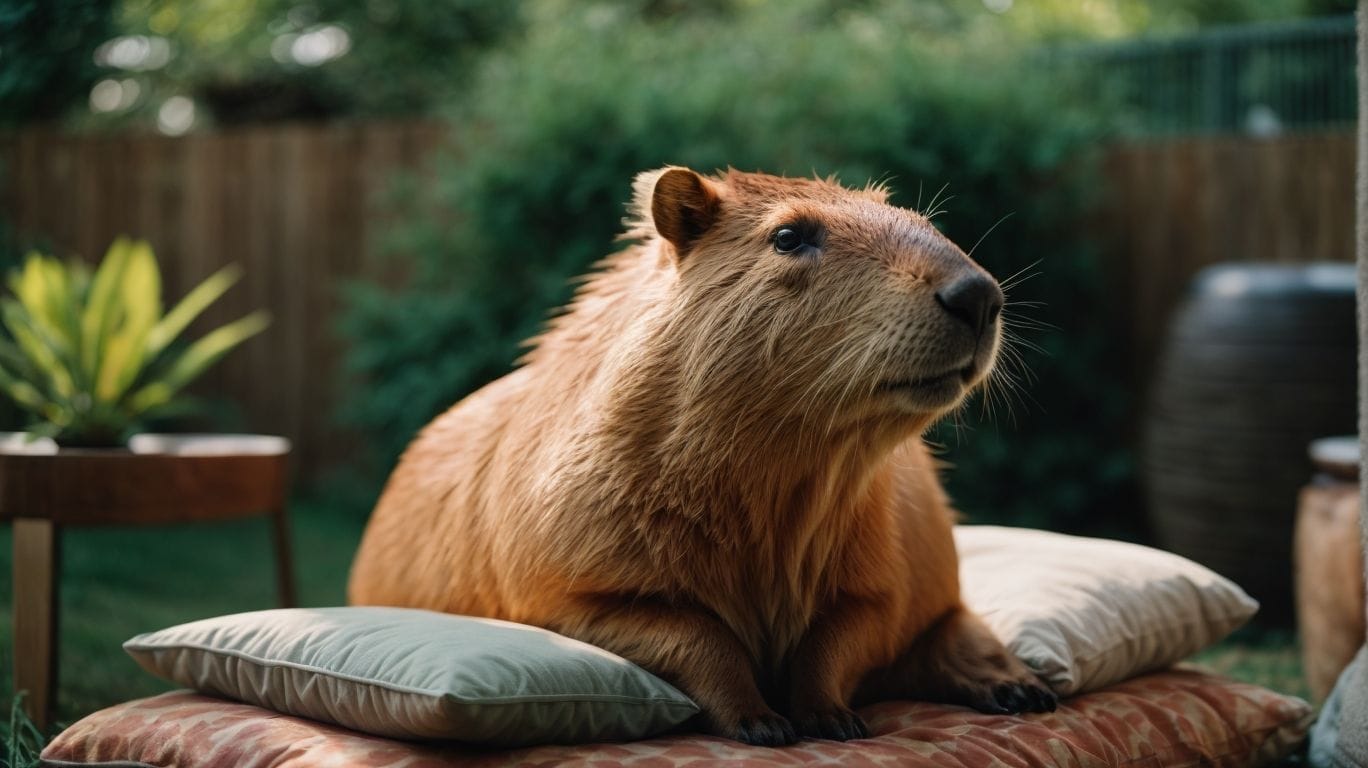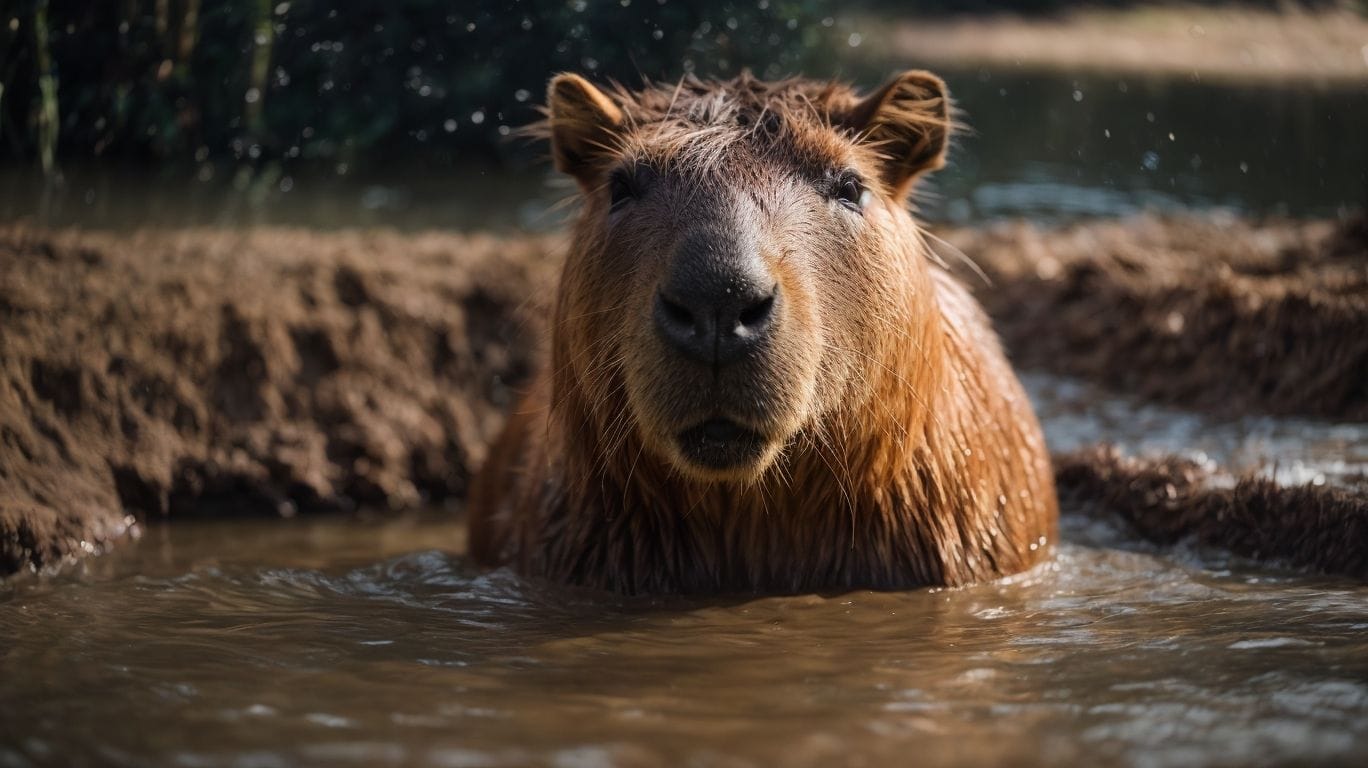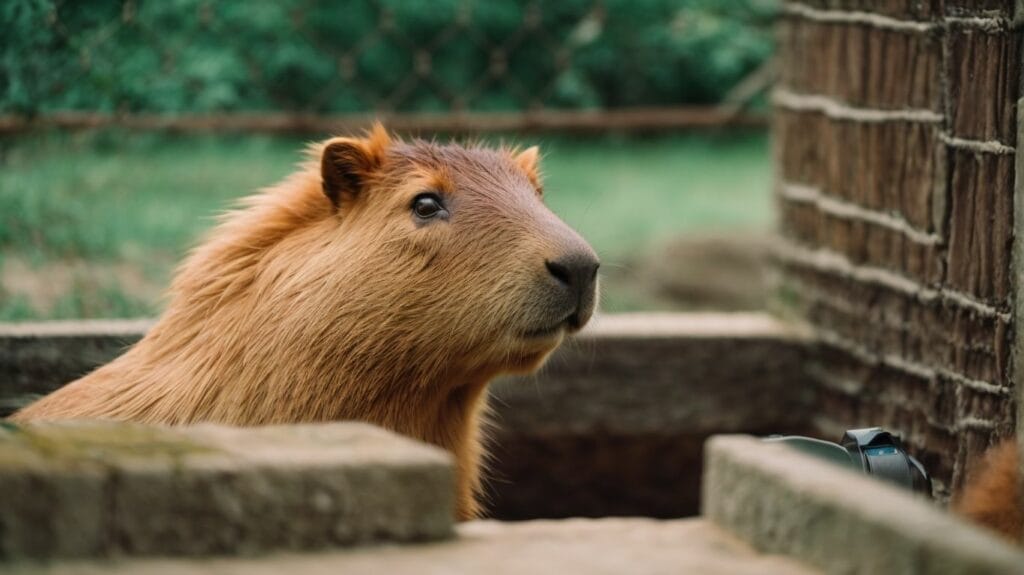Capybaras, with their unique characteristics and intriguing nature, have gained attention as potential pets for individuals seeking exotic companions. They are the largest rodents in the world and are native to South America. Capybaras are known for their semi-aquatic lifestyle, social behavior, and their resemblance to oversized guinea pigs. Understanding the feasibility and practicality of having capybaras as pets requires a deeper exploration of legal considerations, care requirements, and the potential challenges that come with it. While keeping capybaras as pets may seem appealing to some, it is essential to weigh the benefits and drawbacks, as well as consider alternative options for capybara enthusiasts.
Key takeaways:
- Legal restrictions: There are legal considerations for keeping capybaras as pets, as they are classified as exotic animals in many places and require special permits.
- Special care requirements: Capybaras have specific care needs, including space, socialization, and a proper diet, making them challenging to keep as pets.
- Alternative options: Instead of keeping capybaras as pets, individuals can consider visiting capybara sanctuaries and rescues or explore other exotic pet options that may be more feasible and suitable for their lifestyles.
What are Capybaras?

Photo Credits: Petnarnia.Com by Ralph Moore
Capybaras, the largest rodents in the world, have captivated many with their unique charm and lovable nature. In this section, we’ll dive into what makes capybaras so special. From their physical characteristics that set them apart from other animals to their intriguing behaviors, we’ll uncover the fascinating world of these adorable creatures. So, get ready to discover the amazing traits that make capybaras so irresistible as potential pets.Physical Characteristics of Capybaras
Capybaras, the largest rodents in the world, possess a variety of physical characteristics that contribute to their status as fascinating creatures.
- Size: Capybaras exhibit an impressive stature, measuring approximately 3 feet tall and weighing up to 150 pounds.
- Appearance: These remarkable creatures feature a stocky body, small ears, a blunt muzzle, and eyes positioned on the sides of their head.
- Coat: Capybaras boast a dense fur, which showcases a beautiful range of colors from brown to reddish-brown.
- Webbed Feet: Notably, capybaras possess partially webbed feet that enhance their swimming abilities, making them exceptional in aquatic environments.
- Teeth: Capybaras are equipped with long, sharp incisors that continue to grow throughout their entire lives.
These aforementioned physical characteristics facilitate the capybaras’ thriving existence within their natural habitats, specifically wetlands and grassy areas.
Can Capybaras Be Kept as Pets?

Photo Credits: Petnarnia.Com by Harold Robinson
Considering the question of whether capybaras can be kept as pets, we will explore various aspects. From legal considerations to the requirements of capybara care, we’ll also address the challenges associated with keeping them as pets. So, if you’re curious about sharing your home with these fascinating creatures, buckle up as we dive into the world of capybara pet ownership!Legal Considerations for Keeping Capybaras as Pets
When considering keeping capybaras as pets, it is crucial to understand the legal considerations for this unique choice. Many countries and states have specific regulations in place regarding the ownership of exotic pets such as capybaras. Prior to acquiring one, it is imperative to thoroughly research the local laws and obtain any necessary permits or licenses. Taking into account the welfare of the animal, it is important to ensure that you are equipped to provide the proper care and suitable environment that capybaras require. Educating yourself about capybara behavior and their specific needs is vital in order to create a healthy and enriching life for your beloved pet. However, it is essential to note that keeping capybaras as pets may not be feasible or even lawful in certain regions.
Fun Fact: Capybaras are highly social animals and naturally thrive in large groups, which are known as “capybara communities.”
Requirements for Capybara Care
| Requirements for Capybara Care | Description |
| Habitat | A large outdoor space with access to water, such as a pond or pool. |
| Diet | A balanced diet consisting of grass, hay, fruits, and vegetables. |
| Enrichment | Provide toys, hiding spots, and opportunities for social interaction. |
| Temperature | Maintain a warm environment between 70-85°F (21-29°C). |
| Veterinary Care | Regular check-ups, vaccinations, and parasite prevention. |
Meeting the requirements for capybara care ensures their health and well-being as pets. Capybaras need a spacious outdoor habitat with access to water for swimming and cooling off. Their diet should include a variety of nutritious foods, and they should be provided with enrichment to keep them mentally stimulated. Maintaining a suitable temperature range and regular veterinary care are also essential. Before considering a capybara as a pet, ensure you can meet these requirements and provide a comfortable and safe environment for them to thrive.
Challenges of Keeping Capybaras as Pets
Keeping capybaras as pets can come with several challenges. These challenges, which revolve around the difficulties associated with owning a capybara, are as follows:
1. Space requirements: In order to ensure the well-being of these sizable creatures, capybaras require ample space to roam and swim. This means that providing them with large enclosures or access to a sizable outdoor area is essential.
2. Social needs: Capybaras are highly social animals and thrive in groups. To meet their social requirements, it is necessary to provide them with the companionship of other capybaras or suitable substitutes.
3. Special diet: Capybaras have distinct dietary needs and prefer a high-fiber diet consisting of grasses, hay, and fresh vegetables. Providing them with this specialized diet can be both time-consuming and costly.
4. Temperament: While capybaras are generally docile, they have the potential to become aggressive, particularly if they are not properly socialized and trained.
5. Legal restrictions: Due to their exotic nature and potential ecological impact, some jurisdictions restrict or prohibit the ownership of capybaras as pets.
If you find it difficult to overcome these challenges, there are alternative options available for capybara enthusiasts. One option is to visit capybara sanctuaries and rescues, where you can responsibly interact with these animals and contribute to their well-being. Additionally, you may explore other exotic pet choices that better suit your living situation and lifestyle.
The Benefits and Drawbacks of Keeping Capybaras as Pets

Photo Credits: Petnarnia.Com by Samuel Adams
Keeping capybaras as pets can offer unique advantages and challenges. Discover the benefits of having capybaras as companions and the potential drawbacks that come with it. Learn more about the fascinating world of capybaras as pets and get a glimpse into the joys and complexities of sharing your life with these extraordinary creatures.Benefits of Keeping Capybaras as Pets
Benefits of Keeping Capybaras as Pets
Keeping capybaras as pets can have several benefits for their owners. Here are a few to consider:
- Companionship: Capybaras, known as the largest rodents in the world, can provide companionship to their owners.
- Unique and Exotic Pet: Owning a capybara sets you apart from typical cat or dog owners, making your pet choice unique and exotic.
- Relaxation and Stress Reduction: Interacting with capybaras can help reduce stress and promote relaxation.
- Educational Opportunities: Capybaras can be educational pets, teaching owners and others about their natural habitat and behavior.
Fact: Capybaras are known as the largest rodents in the world, reaching weights of up to 150 pounds.
Drawbacks and Challenges of Keeping Capybaras as Pets
Keeping capybaras as pets presents a range of drawbacks and challenges that need to be considered. First, capybaras require a significant amount of space to roam and access to water for swimming due to their large size. Additionally, these highly social animals need companionship to prevent stress and loneliness when kept alone.
In terms of diet, capybaras have specific dietary needs that consist of a high fiber and vegetation intake. Providing a suitable diet within a domestic setting can be quite challenging. Furthermore, capybaras are prone to certain diseases and parasites, necessitating regular veterinary care to ensure their well-being.
Moreover, it is important to be aware that there are legal restrictions surrounding keeping capybaras as pets in many areas. This often involves obtaining permits or facing outright bans.
Considering the aforementioned drawbacks and challenges, thorough research is crucial. Exploring alternative options such as other exotic pets or visiting capybara sanctuaries and rescues can offer similar experiences without the difficulties associated with keeping capybaras as pets.
Alternative Options for Capybara Enthusiasts

Photo Credits: Petnarnia.Com by Scott Rivera
For those captivated by the charm of capybaras, there are alternative paths to explore beyond keeping them as pets. Discover the world of other exotic pets that could offer similar companionship and fascination. Embark on unforgettable journeys by visiting capybara sanctuaries and rescues, where you can witness these magnificent creatures up close and support their conservation efforts. Expand your horizons and find alternative avenues to satisfy your capybara enthusiasm.Other Exotic Pets to Consider
If you’re interested in owning an exotic pet, but a capybara isn’t the right choice for you, there are other exotic pets to consider:
- 1. Hedgehogs: These small, spiky creatures make low-maintenance pets and can be quite sociable.
- 2. Sugar Gliders: These small marsupials are nocturnal and require a specialized diet, but they can form strong bonds with their owners.
- 3. Chinchillas: These fluffy rodents are known for their soft fur and playful nature, but they require a large cage and regular dust baths.
- 4. Parrots: Colorful and intelligent, parrots can make fascinating companions, but they require a lot of attention and mental stimulation.
- 5. Tortoises: If you’re looking for a low-maintenance pet, a tortoise could be a great choice. They have long lifespans and can adapt well to different environments.
Pro-tip: Before bringing any exotic pet into your home, do thorough research on their specific care needs and legal requirements in your area.
Visiting Capybara Sanctuaries and Rescues
Visiting Capybara Sanctuaries and Rescues can be a truly enriching experience for Capybara enthusiasts. It provides a wonderful opportunity to learn more about these fascinating creatures and actively contribute to their well-being. Here are some compelling reasons why a visit to Capybara Sanctuaries and Rescues is so beneficial:
1. Education: These sanctuaries offer exceptional educational programs where visitors can immerse themselves in learning about Capybara behavior, habitat, and important conservation efforts.
2. Hands-on experience: Visitors are often fortunate enough to have the unique chance to interact closely with these captivating Capybaras and observe their intriguing social interactions. This truly helps to deepen their understanding and appreciation for these incredible animals.
3. Support for rescue efforts: By paying a visit to these sanctuaries, you are actively providing vital financial support to help care for rescued Capybaras and promote their successful rehabilitation.
4. Conservation awareness: A visit to these sanctuaries and rescues serves as a powerful medium to raise awareness about the crucial importance of preserving not just Capybaras, but also their precious natural habitats.
5. Inspiration: Witnessing and interacting firsthand with these gentle Capybaras can truly ignite a powerful inspiration within individuals, prompting them to become passionate advocates for the conservation of these magnificent creatures.
Please note that before planning your visit, it is of utmost importance to thoroughly check the rules and regulations set by each sanctuary to ensure a safe and respectful experience for both visitors and the beloved Capybaras themselves.
Some Facts About “Can Capybaras Be Pets?”:
- ✅ Capybaras are the largest rodents in the world, weighing up to 170 pounds and measuring 36 to 48 inches tall.
- ✅ Capybaras require plenty of space and an accessible pool of water due to their large size.
- ✅ The legality of owning a capybara as a pet varies depending on the location. Some states and cities have banned them as pets, while others allow ownership with certain permits or health certificates.
- ✅ Owning a capybara is a huge expense and commitment, as they require a professional zoo-like environment to thrive.
- ✅ Capybaras are highly sociable animals and fare best in pairs or groups, so it is recommended to have more than one as a pet.


